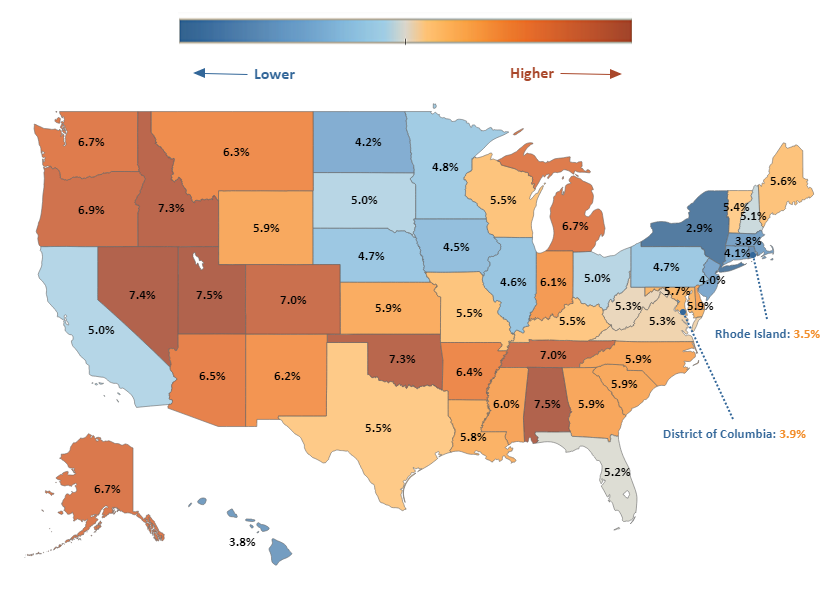The Need to Reduce Unnecessary Medicare Opioid Prescribing
Many older adults are caught up in the nation’s opioid epidemic. From 2002 to 2014, opioid misuse doubled among Americans ages 50 and older.1 Experts indicate that older adults are at increased risk of opioid misuse because of their higher rates of chronic pain due to acute or chronic illness or injury. Older adults also may be at higher risk of complications related to opioid use, including an increase in the likelihood of falls and potential risks due to concurrent use of other medications, such as benzodiazepines.2 The perception that older adults are less prone to addiction can also be a barrier to addressing the opioid epidemic in this population.
|
Snapshot of Opioid Use, Misuse and Overdose Deaths in Older Adults
|
The impact of the opioid epidemic on older adults makes Medicare a key player in fighting the epidemic. To help reduce the number of individuals newly developing an opioid addiction, federal and state policymakers are focusing on reducing opioid prescribing, along with encouraging the use of alternative pain management methods. In the 2019 Call Letter, which outlines policies for Medicare Advantage and Part D plans, the Centers for Medicare & Medicaid Services (CMS) indicated that plans must limit initial opioid prescriptions for the treatment of acute pain to a seven-day supply and alert pharmacists about concurrent use of opioids and benzodiazepines, among other policies.3 H.R. 6, the Substance Use Disorder Prevention That Promotes Opioid Recovery and Treatment for Patients and Communities Act (the “SUPPORT Act”), passed by the Senate October 3 and awaiting the president’s signature, includes many provisions impacting Medicare.
Manatt Health’s recent analysis of Part D prescription drug data shows that the national Medicare opioid prescribing rate—the portion of all Medicare prescriptions that are for opioids—has trended downward from 2013 to 2016, in line with broader national declines in opioid prescribing.
Medicare Opioid Prescribing Rate, 2016

Source: Manatt Health analysis of Part D Prescriber Summary Table accessed February 2018, at https://www.cms.gov/Research-Statistics-Data-and-Systems/Statistics-Trends-and-Reports/Medicare-Provider-Charge-Data/Part-D-Prescriber.html
The same analysis found, however, that opioid prescribing rates vary noticeably across states. For example, in 2016, New York’s 2.9% prescribing rate was less than half the 7.5% rate in Alabama, Idaho, Nevada and Utah. The differences in state prescribing rates may reflect different treatment norms or state policies on opioids and indicate that there may be room for further declines in opioid prescribing in states that currently have higher rates. (See “Medicare Opioid Prescribing Rates Vary Widely Across the U.S.” in the April issue of “Health Update.”)
Although Manatt’s analysis of Part D data shows that the overall number of opioid prescriptions is declining, a recent study using a sample of 24% of the Medicare Advantage population found that from 2007 to 2016, the proportion of Medicare Advantage beneficiaries using opioids actually increased. Specifically, when measuring quarterly use of an opioid, rates increased from 11% to 14% for aged Medicare beneficiaries and 26% to 39% for Medicare beneficiaries with a disability.4
These disparate results appear to indicate that while the total number of opioid prescriptions for Medicare beneficiaries is declining, more beneficiaries may be taking opioids. This finding could mean that the long-term use of opioids for chronic pain with multiple prescriptions over time has declined, but initial treatment with opioids for acute pain is still occurring at rates higher than may be necessary, given alternative pain management treatment options.
NOTE: Dhaval Patel conducted Manatt’s analysis of the Medicare Part D data that informed this article.
This analysis was conducted for Insights@ManattHealth, our one-stop proprietary portal that provides a searchable archive of all of Manatt Health’s content and features premium content that is available only to subscribers. In addition to gaining access to additional findings from this analysis, including an interactive dashboard that presents opioid prescribing rates and changes in the rates at the national, state and county levels, subscribers have access to weekly updates of key federal and state health policy activity; detailed summaries of federal Medicaid, Medicare and Marketplace federal regulatory and sub-regulatory guidance; 50-state surveys on a range of critical healthcare topics; and much more. If you are interested in learning more, please contact Insights@Manatt.com.
1Special Committee on Aging, U.S. Senate. “Seniors Struggling with Opioid Misuse: Senate Aging Committee Examines Opioid Crisis’ Effect on Older Americans,” May 23, 2018, available at: https://www.aging.senate.gov/press-releases/seniors-struggling-with-opioid-misuse-senate-aging-committee-examines-opioid-crisis-effect-on-older-americans
2Davidson, Joe. “Unseen Face of the Opioid Epidemic: Drug Abuse Among the Elderly Grows,” The Washington Post, May 25, 2018, available at: https://www.washingtonpost.com/news/powerpost/wp/2018/05/25/unseen-face-of-the-opioid-epidemic-drug-abuse-among-the-elderly-grows/?utm_term=.be85481c7a2f
32019 Medicare Advantage and Part D Rate Announcement and Call Letter, Centers for Medicare & Medicaid Services, April 2, 2018, available at: https://www.cms.gov/Medicare/Health-Plans/MedicareAdvtgSpecRateStats/Downloads/Announcement2019.pdf
4Jeffery, Molly Moore, Hooten, Michael, et al. “Trends in Opioid Use in Commercially Insured and Medicare Advantage Populations in 2007-2016: Retrospective Cohort Study.” BMJ 2018; 362 : k2833
